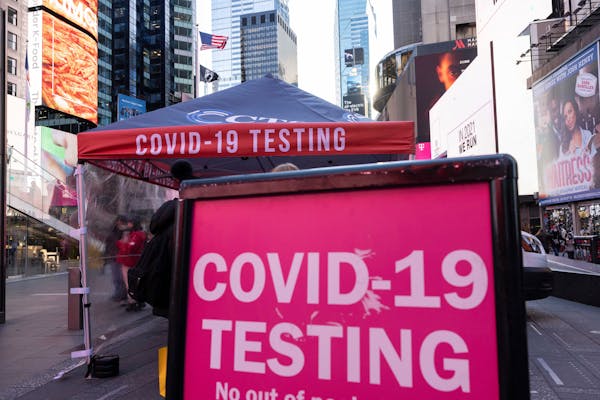A Beltrami County teenager has become Minnesota's sixth COVID-19 death involving someone 19 or younger.
The Minnesota Department of Health reported the death of someone age 15-19 on Friday along with 61 others of COVID-19, the respiratory disease caused by coronavirus infection. While 86% of the 9,616 COVID-19 deaths in Minnesota have been among seniors, an increasing proportion have involved younger adults in the latest pandemic wave this summer and fall.
Deaths among teenagers remain rare, though, with the first being reported in Hennepin County in October and the second in November. State infectious disease director Kris Ehresmann said she couldn't provide the vaccination status of the third teen but that the individual did have an underlying health condition. The other three young people were under 10.
State health officials urged people to seek COVID-19 vaccination and booster doses and to also wear masks in crowded public places given the current rate of viral spread. The state's reported positivity rate of COVID-19 diagnostic testing has dropped over the past two weeks from 11% to 10.3%, but health officials are worried that gatherings over the Thanksgiving holiday could cause a renewed surge.
Minnesota had the nation's third highest rate of new infections over the past seven days, according to the Centers for Disease Control and Prevention, and on Friday reported another 5,685 cases. The state's infection total has reached 926,931.
The 1,556 COVID-19 hospitalizations in Minnesota on Thursday combined with non-COVID patients to fill up more than 96% of inpatient beds.
The state on Thursday reported the nation's second-known infection involving an omicron variant of the coronavirus in a Hennepin County man who recently traveled to New York. The state has found eight samples from people who tested positive that could involve omicron. Genomic sequencing to search for the variant had been completed on five of those samples Thursday afternoon. Four were negative for omicron.
Omicron was labeled a variant of concern after it was identified Nov. 24 in South Africa because of its rapid spread and potential to evade immunity from previous infection or vaccination. State Health Commissioner Jan Malcolm on Wednesday said much is unknown about the variant, but the best strategy for Minnesota is to "stay on offense" and use vaccination and other tools to limit viral spread.
"Omicron is just another wake-up call, if we needed another one, that this remains a global challenge that continues to evolve," Malcolm said Wednesday. "Even though we might feel like we are done with the pandemic, it is certainly not done with us."
Minnesota ranks second among states for vaccinated adults who have received booster doses and 21st among states for its rate of 73.8% of people 5 and older who have received at least a first dose, according to the CDC. Malcolm said she feared Minnesota had become "lax" in other protective measures, though, with surveys showing mask-wearing in public declining from 79% to 22%.

Minnesota State Patrol celebrates diverse new class of troopers

Records: Former Minneapolis police oversight head disparaged women, threatened staff
Video goes viral of man enduring 'shocking' chain whipping on downtown St. Paul street
Minnesota sales, clean-ups and other events to celebrate Earth Day and Arbor Day

